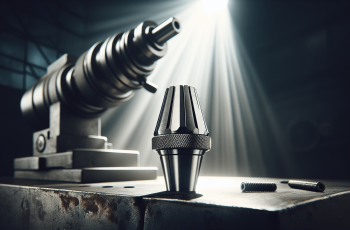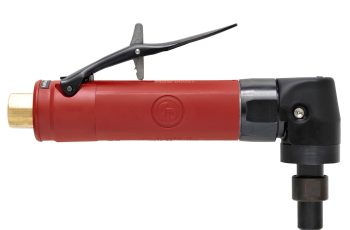Have you ever considered how aerospace manufacturers achieve such precision in their component finishing? Variable speed die grinders are essential in this process, offering the flexibility and control that’s vital for high-quality results. These tools allow you to fine-tune speeds, adapting to different materials and ensuring peak performance. But what exactly makes them indispensable in aerospace applications, and how do they meet the industry’s rigorous standards? There’s more to uncover.
Key Takeaways
- Variable speed die grinders allow for precision finishing, essential for aerospace components with tight tolerances.
- High torque and adjustable RPM enhance efficiency in grinding, polishing, and shaping tasks.
- Ergonomic designs minimize user fatigue, enabling detailed work in intricate spaces.
- Compliance with industry standards ensures safety and effective material handling.
- Versatile for use on metals, composites, and plastics, adapting to various aerospace materials.
Importance of Variable Speed Die Grinders in Aerospace Component Finishing
Although the aerospace industry demands precision, variable speed die grinders stand out as essential tools in component finishing. They let you fine-tune rotational speeds to match the material and task, ensuring precise finishing techniques on delicate parts. By adjusting speed settings, you reduce the risk of over-grinding, which is vital for components with tight tolerances. With free speed ranges from 35,000 to 56,000 r.p.m, these tools provide the flexibility needed for various applications.
These grinders aren’t just about speed control; they’re also about material compatibility. You can work on various materials like metals, composites, and plastics, thanks to their adaptable nature. Whether it’s grinding, polishing, or deburring, these tools support different grades of tooling, making them versatile for complex aerospace tasks. Their ergonomic design minimizes fatigue, allowing you to maintain control and deliver high-quality surface preparation consistently.
Precision and Performance Features Enhancing Aerospace Manufacturing
Variable speed die grinders don’t just offer precision in component finishing; they also bring a suite of performance features that enhance aerospace manufacturing. With tool innovation at the forefront, these grinders deliver unmatched aerospace efficiency. Speeds ranging from 12,000 to 90,000 RPM, coupled with high torque, guarantee you handle precise aerospace applications with ease. Speed governors and variable speed throttles provide fine control, essential for maintaining component tolerances. Ergonomic designs reduce fatigue and vibration, letting you work longer without sacrificing accuracy. Maintenance is a breeze, thanks to drop-in motors and low air consumption, keeping production lines humming. Plus, compatibility with diverse collets enhances versatility, allowing for precise accessory use and exceptional surface finish quality, critical for aerospace integrity. Air Turbine Tools® Technology offers the lowest vibration, weight, and sound levels of any rotary tool, making them an ideal choice for reducing operator discomfort in demanding environments.
Types and Configurations of Die Grinders for Aerospace Applications
In aerospace manufacturing, you’ll find a diverse array of die grinders tailored to meet specific demands. Die grinder types like straight, angle, and 115-degree models cater to various tasks, from intricate deburring to weld grinding. Tool configurations, such as pneumatic or electric, offer flexibility based on your power source preferences. Pneumatic grinders provide high torque and RPM, while electric ones deliver convenience without compressors. With operating pressure typically at 90 PSI, pneumatic grinders maintain consistent power and performance essential for precision aerospace tasks. Consider exhaust options—front, rear, or side—to minimize contamination. Collet sizes, typically ranging from 3mm to 6mm, support essential aerospace tooling. Ergonomic designs, like hexagonal or pencil-shaped bodies, enhance comfort for precision tasks. Speed regulation is vital for ideal material removal without damage, ensuring your aerospace components are crafted to perfection.
Applications and Benefits in Aerospace Manufacturing Processes
When it comes to aerospace manufacturing, variable speed die grinders are indispensable tools that enhance process efficiency and precision. They allow you to deploy advanced grinding techniques essential for controlled deburring and material removal, ensuring turbine blades and cooling system parts achieve peak aerodynamic efficiency. You can improve surface treatment for small parts, enhancing both performance and aesthetics with fine blending and polishing. Their low vibration technology grants you superior control, minimizing rework and ensuring consistent high-speed operation for uniform finishes across metals, composites, and plastics. These grinders adapt to diverse tasks—grinding, polishing, shaping—thanks to compatible accessories, allowing refinement of complex aerospace geometries. Lightweight ergonomic designs reduce fatigue, enabling detailed work in intricate spaces. The Universal Tool UT8728 Series Die Grinders, known for their 0.9 HP power and 22,000 RPM speed, exemplify the type of equipment that provides the necessary versatility and power for such demanding applications.
Industry Standards and Tool Selection Criteria for Optimal Performance
As you explore the applications and benefits of variable speed die grinders in aerospace manufacturing, understanding industry standards and tool selection criteria is key to achieving peak performance. You must guarantee your tools comply with aerospace material handling standards, focusing on torque and speed specifications suitable for metals like titanium and inconel. Prioritize safety compliance by selecting grinders with lockoff levers and ergonomic designs to minimize operator fatigue. Tool maintenance is essential—look for options with clear documentation for calibration and part replacement to prevent downtime. Choose grinders with variable speed control to match material requirements and reduce wear. Finally, consider tool exhaust and weight for operator comfort and workspace safety, ensuring adherence to noise and vibration standards.
Conclusion
In aerospace manufacturing, variable speed die grinders are your go-to tools for achieving precision and versatility. By fine-tuning the speed to match different materials, you guarantee ideal results without risking over-grinding. These grinders considerably enhance surface treatment, improve aesthetics, and handle intricate tasks with ease. When selecting a grinder, consider industry standards and configurations to meet your specific needs. Ultimately, they’re essential for maintaining the high quality and performance standards demanded in aerospace applications.

